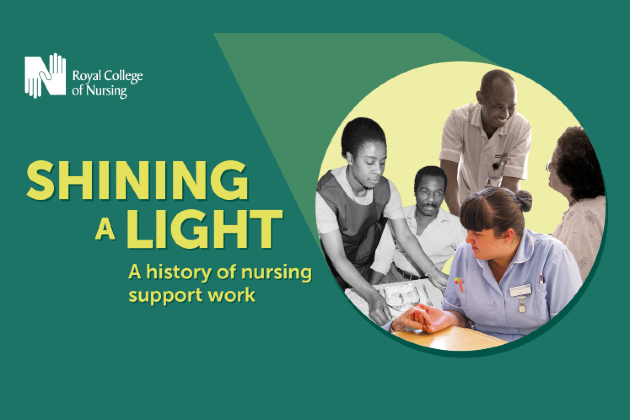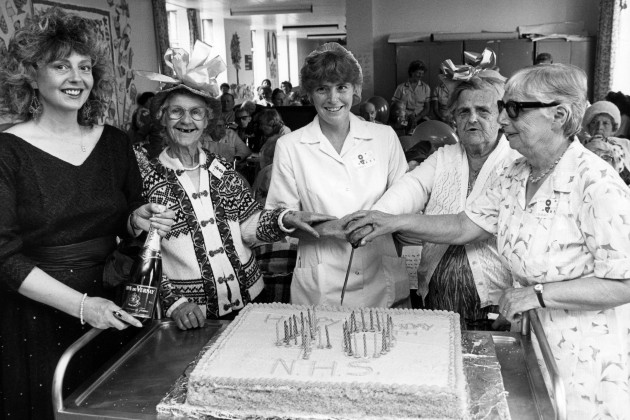On 13 June 1944, one week after D-Day, three Dakota aircraft took off from an RAF base in Wiltshire and headed over the channel to France. The planes carried ammunition and rations to supply the Allied soldiers fighting their way through Normandy.
But there were three women on board as well – Corporal Lydia Alford, Leading Aircraft Women (LACW) Myra Roberts and Edna Birkbeck, members of the Women’s Auxiliary Air Force. Their role was to care for the wounded men the planes would carry on their return trips.
This was the first time the British government had authorised women to be flown into an active war zone. It was a potentially lethal mission. When the Dakotas finally returned safely, the three women were dubbed “the Flying Nightingales” by the newspaper correspondents who greeted them.
- Read next: WWII's refugee nurses: ‘They couldn’t save their families, but they could help patients in the UK’
Many of the estimated 500 women who became Flying Nightingales in the final year of the war had nursing backgrounds. This year, the 80th anniversary of D-Day, their stories – previously forgotten or overlooked – are unearthed by an exhibition at the Florence Nightingale Museum at St Thomas’ Hospital in London.
None of the Flying Nightingales are alive today, but the exhibition is one of several attempts to ensure their contribution to the Normandy landings, and ultimately to the defeat of Hitler, is recognised.
On 13 June, family members of the Flying Nightingales, serving members of the RAF Medical Services, and other RAF and NHS representatives gathered at the former site of RAF Blakehill Farm, where those Dakota flights departed from 80 years ago. A ceremony was held at the end of the runway – now a quiet nature reserve – and was sounded.
I tried to make the wounded men as comfortable as possible in all that dust
Sheila Lane is the niece of Corporal Lydia Alford, one of the first Nightingales. She recalls seeing her aunt on an old news reel filmed in 1944. “On the screen was my Aunty Lydia saluting two officers before boarding an aircraft to go to France. That’s my earliest recollection of her,” she says.
“Growing up, Aunty Lydia was a bit of a heroine and role model for me. I have great respect for those who do the same job today.”

The book, A Nightingale Flew, a short history by KM Holliday, includes memories of the three original Flying Nightingales from different stages of their flying careers.
Corporal Lydia Alford recalled the scene on the Normandy coast as her Dakota flew over: “We could see the aftermath of the D-Day landings strewn across the beaches: abandoned landing craft; broken tanks; craters; and scattered, discarded equipment. The thing I remember chiefly about that first time on the ground in Normandy was the dust, which was everywhere, coming up in great clouds. Whilst the freight was being unloaded, I tried to make the wounded men as comfortable as possible in all that dust.”
Every Flying Nightingale was issued with a parachute, but if a crash seemed likely when they were returning with casualties, they were forbidden from baling out. Their orders were to stay with the injured and the parachutes were locked away. Nor were the Flying Nightingales protected by the Red Cross emblem. As the outbound flights carried supplies for the front line, the planes were not permitted to display it.
War taught me to stand on my own feet
LACW Myra Roberts described a crash landing later in the war as her plane returned to Wiltshire after transporting casualties to Oxford: “I ended up at the foot of the plane, but it wasn’t too bad; we just skidded along.”
As the war raged, she and her colleagues had little downtime. “You could be on duty that afternoon, come back at night, and find you had to stay put for the next flight. We had very little leave at all and it was dangerous work, though none of us seemed to suffer from nerves. The war taught me to stand on my own 2 feet, I suppose.”
LACW Edna Birkbeck had been a trainee nurse before the war but wanted more excitement, she said. “By the end of the war, I had done about 70 flights with 233 Squadron. Some of the wounded were very badly injured, but you couldn’t let it get to you. Despite the severity of their injuries, and, on one occasion, having to crash land after engine failure, none of my patients ever died on any of my flights.”
Not all of the women made it home. LACW Margaret Campbell was one of those killed in action. Aged 27, Margaret was attached to a Canadian squadron based at Blakehill Farm. On 24 October 1944, her plane was on a mission to Antwerp when it was shot down over Calais. The entire crew, including Margaret, were killed. She is buried in the Calais Canadian War Cemetery.
And LACW Margaret Walsh, 33, was on a Dakota that crashed into the sea a few miles from Calais in April 1945. No trace of the aircraft was found, and the cause of the crash remains unknown. Margaret and the rest of the crew are remembered on the stone walls of the Runnymede Memorial, where the names of Second World War Commonwealth air forces personnel who have no known grave are recorded.
“I was so pleased to see these nurses remembered at D-Day this year,” says Kendal Andreason, RCN Professional Lead for Acute and Emergency Care and Defence Nursing. “It’s so important to remember the courage and compassion of all the nurses who have come before us. We can learn so much from them and take great pride in their achievements as a profession."
According to the Royal Air Force Museum, in just the first month of casualty evacuations following D-Day, 1,097 stretcher cases and 467 “sitting cases” were returned to Britain for treatment at specialist hospitals.
Without the Flying Nightingales, many may never have made it home alive.
Find out more
- Join the RCN History of Nursing Forum.
- Read the latest RCN Magazine history features.
- Explore the RCN’s Service Scrapbooks on Nursing, Storytelling and the First World War.








